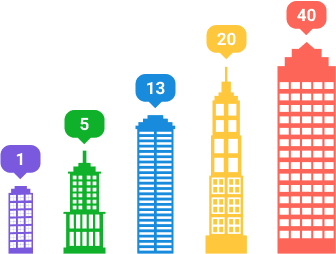Time estimation is at the basis of adequate project planning and successful project delivery. Therefore, managers and their teams are under high pressure to develop as accurate estimates as possible. They spend much time trying to figure out how long it would take to complete tasks without delays and usually come up with a fixed value in hours, days or months.
Nevertheless, hours are not the only possible format to calculate and present project estimates. An increasingly popular alternative to traditional time estimation, story point estimation, doesn’t focus on the probable duration of the project at all. Instead, it helps evaluate the extent of effort the task or the project requires.
This technique has a plethora of advantages over the man-hour estimation methods, and we’ve described them in this article along with the process of story point estimation.
Read on to learn more!
What Is Story Point Estimation?
Story point estimation is commonly used in Agile projects that are all about flexibility, continual learning and collaboration. It serves to evaluate the amount of effort required to complete a single piece of work or an item from a product backlog: anything from the development of new features to bug fixing and massive product changes.
Story point estimation aims to assign a specific numeric value (story point) to every selected item based on its size, complexity and number of risks involved in the implementation process. Note that RELATIVE VALUES AND RATIOS ARE MORE SIGNIFICANT THAN RAW FIGURES – it’s not so essential that a piece of work receives 2 story points and another one gets 4. What’s important here is that the item assigned with the value of 4 requires twice as much effort than the one rated as 2.
In other words, when using story point estimation, you COMPARE VALUES TO PREDICT THE OVERALL VOLUME OF EFFORT for a separate task or the project as a whole. Hence, unlike traditional hour-based methods, this technique doesn’t really set any time limit for the estimated piece of work right away.
However, deadlines play a vital role in project management, and you can select a time range that every story point would represent. For instance, the value of 1 may equate to 4-6 hours. The value of 3 may call for 7-10 hours, the value of 5 – for 12 hours, etc. The timeframe in each case will depend on your team composition and specifics, which require careful examination and analysis as well.
The Process of Story Point Estimation
Story point estimation can be a bit confusing at first for those who have never dealt with it before. To clarify the concept, let’s take a look at the main steps included in the story point estimation process in some detail:
Step 1: Choose an estimation matrix
Simply put, an estimation matrix is a numeric scale that you’ll use to evaluate the selected pieces of work. It can be a straightforward linear scale (… 3, 4, 5, 6, 7 …) or, preferably, the Fibonacci sequence (…5, 8, 13, 21, 34 …). The reason for applying the latter is simple: the gaps between numbers in this series are more extensive than in the linear scale, which makes it easier to contrast the difference between the values assigned to separate tasks at hand.
Step 2: Identify user stories or other relevant items for estimation
At this phase, you simply need to determine what your project will target to accomplish: develop a new innovative tool, enhance the functionality of your software, improve internal process infrastructure, etc.
Note: It is recommended to format backlog items and project tasks that you plan to estimate as user stories – the descriptions of product features from end-users’ points of view (considering their wants, needs and preferences). By writing a user story, you may learn more about consumers’ quality expectations, conditions of satisfaction (such as price and utility), intentions behind purchasing whatever you plan to create, etc. These things are essential to consider since they’ll define what you’re going to do in your project to a significant extent and, thus, will largely determine the final estimate.
Step 3: Select reference points
Historical data provides valuable evidence to achieve more accurate and credible estimation results. Besides, it’s more convenient to estimate tasks when you have data to compare them with. For this reason, if you’ve completed a similar project somewhere in the past, you can utilize the collected information on its performance to develop new estimates.
Step 4: Identify the risks, size and complexity of the selected estimation item(s)
The volume of effort required for project completion depends on the quantity of tasks it comprises, their complexity, as well as the number of risks and uncertainties that the team may encounter on the way. Therefore, at this step, you have to:
- Identify the size of the selected user story by calculating how many tasks and sub-tasks should be performed during its implementation.
- Assess the complexity of tasks. (Writing 100 standard two-sentence messages isn’t the same as creating 10 pieces of full-length technical descriptions. Though the latter contains fewer sub-tasks than the former, it will most probably take much more effort to complete.)
- Detect as many risks and uncertainties as possible. Do you have any gaps in knowledge about client expectations? Will a delay in supplies, increased employee turnover or bad weather severely impact your process? All the relevant risks and uncertainties must be reflected in your estimate for more accurate results.
Step 5: Discuss and estimate
Once the above step is passed, it’s time to rate each piece of work under consideration based on its size, complexity and associated risks.
Story point estimation is usually carried through team discussion and, often, by using a gamified estimation technique known as Planning Poker or Scrum Poker.
Long story short, at such an estimation meeting:
- Everyone gets familiar with the selected user story and project objectives.
- Team members anonymously estimate that story’s size, complexity and risks (i.e., their probability and impact), providing an estimate for each of these aspects separately.
- Then, each participant presents initial point values and, if they match – the number becomes the final estimate.
- If they don’t match, estimators should explain their choices and, after the discussion, estimation is repeated until the consensus is achieved.
- Afterward, the final point values for the story’s size, complexity and risks are summed up to get the total estimate.
Extra Step 6: Set up deadlines
After the final story point estimate is agreed on, it’s possible to predict how much time the work on the estimated user story will ultimately take by determining how fast each employee is capable of accomplishing a single story point.
For example, a task receives the total value of 100 story points. An experienced team member will complete 1 story point in 2 hours, and a less experienced one – in 3 hours. Thus, if responsibilities for the task are equally divided between these two employees, the estimate can be converted into hours as follows:
50 SP x 2 hours + 50 SP x 3 hours = 250 hours
Knowing this figure, you can easily determine the deadline for the task.
Advantages (and One Disadvantage)
Story point estimation may seem more complicated than traditional hour-based estimation techniques. But is that really the case?
The technique can surely be time-consuming and calls for some skills and experience, which we may see as its primary disadvantage. However, when implementing such hour-based estimation methods as 3-point estimation or Delphi, one also must commit quite a lot of time and effort to analyze project specifics, create detailed work breakdowns and discuss estimation results at expert meetings. Hence, the thing that makes story point estimation look so difficult is its unfamiliarity. Once you grasp the concept, it seems less scary and much more feasible.
Along with that, story point estimation has many apparent advantages over many hour-based estimation techniques:
- Story point estimates are accurate. The method offers a holistic system for the evaluation of core factors contributing to work duration, including risks and complexity. In contrast, most of the traditional hour-based estimation methods only look at the amount of task and don’t encourage estimators to take into account worst-case scenarios.
- The technique is employee-friendly. Man-hour estimation often produces a sort of inferiority complex: if you fail to meet the estimate, it’s a sign that you’re not competent and skilled enough; but if you complete the planned work earlier, it means the forecast was wrong. As for story point estimation, by focusing on the volume of effort instead of task duration, it doesn’t push workers to meet the deadline at any cost. It implies that a timeline is a relative feature and may vary depending on your team members’ speed of performance (which might change once in a while).
- It encourages flexibility. Every team – especially an agile one – aims to be as quick and efficient in work as possible. However, if employees commence struggling and their performance slows down for some reason, this downward change in speed doesn’t affect the story point estimate at all. That is to say, you might need to recalculate the deadline in such a case, but not the story point estimate itself. In contrast, man-hour techniques produce very fixed time-bound forecasts, and when something goes wrong, you normally have to recalculate them entirely.
- Story point estimation is collaborative in nature. It eliminates the risk of biasing due to estimators’ subjective perceptions, lack of knowledge or attention. When many competent team members are involved in the estimation process, results tend to be more objective and trustworthy.
- The technique doesn’t have to be carried out by task performers. Even those who won’t be doing the actual job themselves but have a good understanding of the field and project requirements can easily produce accurate and objective story point estimates.
Conclusion
Overall, story point estimation enables teams to precisely determine the volume of effort associated with any piece of work. With a forecast like this, you can organize the processes, organizational culture and environment in a way that allows attaining objectives more efficiently.
To use this technique properly, you might need to spend some time learning and practicing. However, the attempt is surely worthwhile – with the aid of story point estimation, you’ll gain a chance to get more accurate and less rigid estimates and rethink your approach to project management for the benefit of your team members and the business as a whole.







Top comments (1)
Nice read, thanks for sharing it! I have written an interesting blog post on the same topic. But, there are 9 agile estimation techniques that use the new technique of story points agile estimation. Do check that out, I am sure you will like it.
Blog post: Story points vs hours